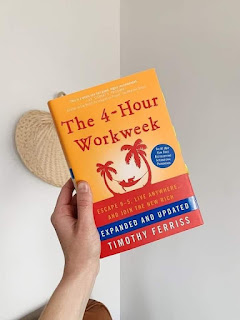10 Lessons From "Don't Sweat the Small Stuff" by Richard Carlson
1. Ignore the Small Stuff: Numerous small things occur every day like having to wait in line, listen to unfair criticism, or witness a stranger cutting in front of us in traffic. It is crucial to learn not to worry about these little things so we don't lose touch with the magic and beauty of life. By stepping back from immediate drama, we can realize that most small things fade in the grand scheme of things, and we'll be left with more energy to be kinder and gentler.
2. Make Peace with Imperfection: Richard claims that striving for perfection conflicts with the desire for inner peace. Being a perfectionist means always looking for flaws and imperfections, which hinders our goal of being kind and gentle. Accepting our imperfections allows us to achieve inner peace.
3. Show Compassion: Compassion involves the willingness to put one’s self in someone else’s shoes, to imagine what it’s like to be in someone else’s predicament, and simultaneously feel love for that person. Richard reveals that compassion involves two primary things: intention and action. While intention opens you up to others and their needs, action is “what you do about it.” The heart we put into the act is often more important than the “size” of the act. And as Mother Teresa reminds us, “We cannot do great things on this earth. We can only do small things with great love.”
4. Everything else can wait: Nothing is more important than our sense of happiness and inner peace and that of our loved ones. If we cut our obsession with getting everything done, we will see that in reality, almost everything can wait. Very little in our work lives truly falls into the “emergency” category. Work will all get done in due time. What we have zero control over is our time here on earth, and so, the least we can do is spend it doing the things we love with the people we love, relishing every minute of it.
5. Gentle, relaxed people can be super achievers too: "I used to believe that those who are always busy, always striving and constantly working towards their next big goal were the ones who achieved the most success. However, Richard argues that having inner peace can help you to avoid distractions and focus better on your goals. This way, you can save your energy and dedicate it to helping others."
6. When you do good, don’t sound your trumpet and ignore reciprocity: While all acts of kindness are inherently wonderful, Richard points out that there is something even more magical about doing something thoughtful and never mentioning it to anyone, ever. By keeping it to yourself, you are sure you’re not secretly seeking anyone’s approval, and you get to revel in the abundant joy that comes with being kind and generous. Richard goes on the emphasize that generosity is its own reward, so when you do good to someone don’t ask for or expect one in return.
7. Live in the present: We allow past problems and future concerns to dominate the moment we are in, so much so that we end up anxious, frustrated, depressed, and hopeless. On the flip side, we also postpone our gratification, our stated priorities, and our happiness, often convincing ourselves that “someday” will be better than today. Unfortunately, this “someday” never actually arrives. What we have is the present moment and Richard implores us to make the most of it, as if we have no past nor future.
8. Choose to be happy and kind over being right: “We always have the chance to choose between being right and being happy. Many times, the two are mutually exclusive!” According to Richard, it’s often just our egos and our obsession with being right that ruins an otherwise peaceful encounter. However, there are certain positions when one should not budge such as when you hear a racist comment. Here, it’s important to speak your mind with love and caution. Also, we are advised to always remember we have chances to “correct” people, privately as well as in front of others.
9. Be the First One to Act Loving or Reach Out: Richard tells the story of an ailing woman who had not spoken to her son in over three years because of a small disagreement, to argue the need for us to not hold on to little resentments that may have stemmed from an argument, a misunderstanding, the way we were raised, or some other painful event. When she finally did reach out, her son took the initiative to apologize. Whenever we hold on to our anger, we turn “small stuff” into really “big stuff” and make our positions more important than our happiness.
10. Accept that life isn’t fair: One of the mistakes many of us make is to feel sorry for ourselves, or for others, thinking that life should be fair, or that someday it will be. It’s not and it won’t. Richard reminds us that “Life isn’t fair. It’s a bummer, but it’s absolutely true. Ironically, recognizing this sobering fact can be a very liberating insight.”




























